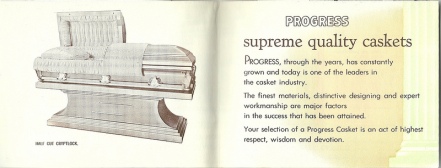There are many different types of containers that the deceased were buried in, often chosen based on the cultural norms of the group, the context of the death or burial, or may be due to personal preference of the deceased or mourning community. When discussing burial containers, there are dozens of terms that can be employed and a range of descriptive terms. It is important to get the terminology correct since different types of containers have different implications. For example, the Anglo-Saxons were known to bury the dead in a number of different ways including trough like coffins, graves lined with rocks or wood, or within urns. However, if someone described the container as a metal casket, we would know that something was wrong with this description or the item didn’t actually date to the Anglo-Saxon period. In history, the difference between simple terms like coffin and casket can mean drastically different things when interpreting the date of the burial or cultural affiliations.
Here, we’re going to discuss two major types of burial containers which are all similar in that they hold complete human remains, but different in construction, history and purpose.
Coffin: A coffin is defined as a funerary box used for the display and containment of the dead for burial for cremation. The term was first used in English during the 14th century, and stems from the latin term cophinus, meaning ‘basket’. It refers specifically in North America to a tapered hexagonal or octagonal box that has an anthropoid shape to it (Wikipedia). This means that the shape of the box conforms to a person’s body. The lid is similar in shape, and can be a solid piece or hinged at the top for viewing purposes. The fittings (handles, decorations, etc) on the exterior are known as coffin furniture, and can be useful in gaining information about dates of construction and wealth of the individual. The material of the coffin is also revealing as it often varies with availability, wealth and fashion. If you think back to any Western movies, wood coffins were often a featured part of the town landscape due to the frequent need and wood being the only available material.
A recent example of a coffin found in history is the ‘coffin within a coffin’ found at the Richard III car park. The first coffin consisted of a stone anthropoid coffin, and within it was a lead coffin. While the second coffin hasn’t been opened, it is an interesting find though not all that rare when we consider historic coffins. In England, it has long been a law that any coffin placed in the ground required an outer layer, middle layer of lead, and an inner liner within the coffin. The car park coffin may represent a number of things, including a wealthy individual or someone trying to protect the deceased.
Casket: Coffin and casket are often used interchangeably, however in North America there is a difference. The term casket was originally defined as a box for treasures or jewelry. The use of the word in reference to a burial container began during the rise of the undertaker trade in North America. During the 18th and 19th century, funeral directors and the funerary trade rose in popularity. The introduction of caskets, being a rectangular box for viewing and burial, was done in order to ease the mourning process. The display of the dead within the casket appears more like a bed, and with embalming practices gives the appearance of sleep. It was thought that the term casket was kinder, and it would be less offensive to see the deceased in a not not shaped like the dead body. Some, like Nathaniel Hawthorne in 1863, felt that this change in burial container from coffin to casket was sheltering people from the reality of death. He stated “Caskets! A vile modern phrase, which compels a person … to shrink … from the idea of being buried at all.” Despite this, caskets are the most common Western form of burial container (unless one chooses to be cremated).
It is interesting how the shift in terms is associated with shifting relationships of the living to death. Over the past couple centuries, there has been a strong shift away from death. While funerals used to be more visceral and people were exposed to death, now death is biological and not openly discussed. The desire to shield people from death is a new phenomenon. The change in terms and type of coffin is reflective of this broader change. However, the tides are changing. The appearance of ‘bucket-lists’ and rise of death discussion groups show that perhaps we are beginning to change once again. Maybe we will see the rise of the coffin in North American once more…




Pingback: Music for the dead: $30,000 coffin that plays fave tunes | pundit from another planet·
Pingback: The Life of a Coffin - Infographic - Passare.com Blog·